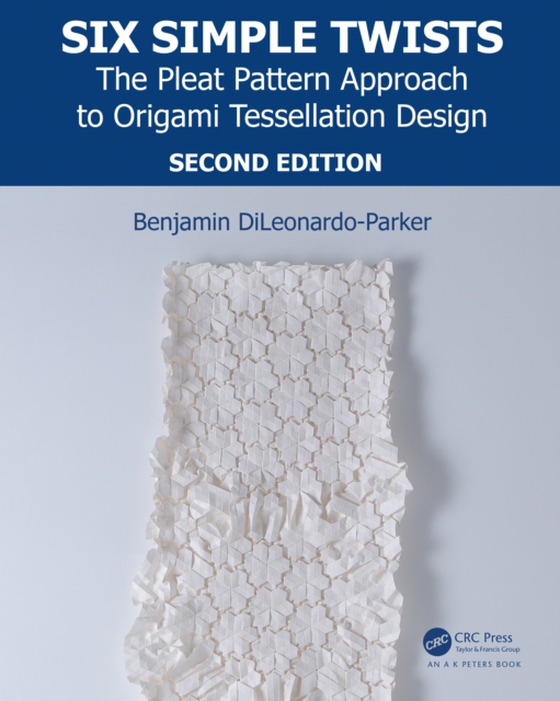
Six Simple Twists e-bog
322,59 DKK
(inkl. moms 403,24 DKK)
This new edition of Six Simple Twists: The Pleat Pattern Approach to Origami Tessellation Design introduces an innovative pleat pattern technique for origami designs that is easily accessible to anyone who enjoys the geometry of paper. The book begins with six basic forms meant to ease the reader into the style, and then systematically scaffolds the instructions to build a strong understanding ...
E-bog
322,59 DKK
Forlag
A K Peters/CRC Press
Udgivet
26 august 2020
Længde
308 sider
Genrer
Mathematics
Sprog
English
Format
epub
Beskyttelse
LCP
ISBN
9780429858109
This new edition of Six Simple Twists: The Pleat Pattern Approach to Origami Tessellation Design introduces an innovative pleat pattern technique for origami designs that is easily accessible to anyone who enjoys the geometry of paper. The book begins with six basic forms meant to ease the reader into the style, and then systematically scaffolds the instructions to build a strong understanding of the techniques, leading to instructions on a limitless number of patterns. It then describes a process of designing additional building blocks. At the end, what emerges is a fascinating artform that will enrich folders for many years. Unlike standard, project-based origami books, Six Simple Twists focuses on how to design, rather than construct. In this thoroughly updated second edition, the book explores new techniques and example tessellations, with full-page images, and mathematical analysis of the patterns. A reader will, through practice, gain the ability to create still more complex and fascinating designs.Key FeaturesIntroduces the reader to origami tessellations and demonstrates their place in the origami community New layout and instructional approach restructure the book from the ground up Addresses common tessellation questions, such as what types of paper are best to use, and how this artform rose in popularity Teaches the reader how to grid a sheet of paper and the importance of the pre-creases Gives the reader the ability to create and understand tessellations through scaffolded instruction Includes exercises to test understanding Introduces a new notation system for precisely describing pleat intersections Analyzes pleat intersections mathematically using geometrically-focused models, including information about Brocard points
 Dansk
Dansk

